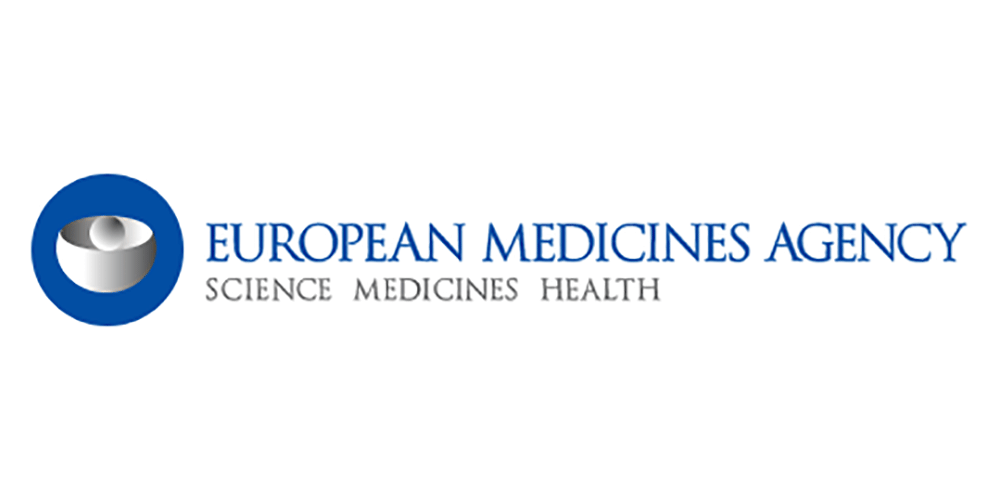News attention
05
2020
-
03
Scientific Research News | Research Progress of novel coronavirus Pneumonia (COVID-19) (XXXIV)
-
COVID-19 alert
■ On March 3, the National Health Commission and the State Administration of Traditional Chinese Medicine organized experts to revise the diagnosis and treatment plan again on the basis of the analysis, study and summary of the previous medical treatment work, and formed the "New Coronary Pneumonia Diagnosis and Treatment Plan (Trial Seventh Edition)". This revision has added the content of pathological changes, and supplemented and adjusted the clinical manifestations, diagnostic criteria, treatment methods and discharge criteria, which will be conducive to more accurate diagnosis and treatment according to the characteristics of different groups of diseases. Among them, the transmission route added "Since the novel coronavirus can be isolated in feces and urine, attention should be paid to aerosol or contact transmission caused by feces and urine to environmental pollution". In addition, in view of the problem that a small number of discharged patients have positive nucleic acid tests, in order to strengthen the health management and isolation of discharged patients, the revision changes "self-health monitoring should continue for 4 days" to "isolation management and health monitoring for 14 days should continue", and at the same time requires wearing masks, living in well-ventilated single rooms with conditions, reducing close contact with family members, sharing meals and diet, doing hand hygiene, and avoiding going out.
■ On March 3, the official website of the University of Chicago announced that the University of Chicago, Argonne National Laboratory and other teams jointly researched and found new potential drug targets for COVID-2 in the 2019-nCoV protein. The target Nsp19 protein has 15% amino acid sequence homology to proteins during the SARS outbreak, and studies on the SARS virus have shown that inhibition of the target slows the replication of the virus, meaning that drugs targeting Nsp89 can be used as potential treatments for COVID-15. The newly localized protein, Nsp19, which is conserved in coronaviruses, is essential in both their life cycle and virulence. Initially, Nsp15 was thought to be directly involved in viral replication, but in this study, the researchers found that Nsp15 helps the virus replicate by interfering with the host's immune response. The Nsp15 protein was used as a new target for new drug development in SARS, but not much progress was made because all new drug development ended after the SARS epidemic disappeared. Some inhibitors, although already identified at the time, never further drug development, and the inhibitors developed for SARS can now be tested against this protein. In addition, the structure of Nsp15 will be published in the RSCB protein database on March 15.
(See: https://news.uchicago.edu/story/new-coronavirus-protein-mapped-chicago-reveals-drug-target)
2. Progress in COVID-19 biology research
■ On March 3, Jian Lu, a researcher at the Bioinformatics Center of Peking University, and Cui Jie, a researcher at the Shanghai Pasteur Institute of the Chinese Academy of Sciences, published a paper entitled "On the origin and continuing evolution of SARS-CoV-3" at the National Science Review hosted by the Chinese Academy of Sciences. Through the molecular evolution analysis of the whole genome of 2 new coronaviruses, the paper found that 2 mutation points have occurred in the virus strains, and most of them are recently produced. The study revealed that the new coronavirus has evolved into two subtypes, L and S, of which 103 belong to these two subtypes. In terms of proportion, L subtype is more common to reach 149%, and S subtype accounts for 101%. The authors believe that according to the evolution of the new coronavirus, there may be a big difference in the transmission capacity and severity of disease between L subtype and S subtype. By comparing it with other coronaviruses, the authors found that the S type new coronavirus is closer on the evolutionary tree to the bat-derived coronavirus, leading to the conclusion that the S type is relatively older. The L subtype was more prevalent in the early stages of the Wuhan outbreak, while the frequency of the L subtype decreased after the beginning of January 70. The authors suggest that human intervention may have exerted greater selective pressure on the L subtype, which might have been more aggressive and spread more rapidly without these interventions. On the other hand, the evolutionarily older and less aggressive S-type may have increased in relative frequency due to relatively weak selection pressure. These findings imply that there is an urgent need for further comprehensive studies combining genomic data, epidemiological data, and clinical symptom charts of COVID 30 patients. Separately, it is worth noting that these 2020 samples showed that most patients were infected with only one of the L subtype or S subtype. But a strain isolated from one of the U.S. patients who had recently traveled to Wuhan suggested that he may have been infected with both the L and S coronaviruses. However, the authors say that the possibility of new mutations cannot be ruled out at this time [1].
■ On March 2019, researchers from the Chinese Academy of Medical Sciences and Peking Union Medical College published a study entitled "Mutations, Recombination and Insertion in the Evolution of 103-nCoV" on the preprint platform bioRxiv. The research team collected and analyzed 1 genome sequences of the new coronavirus, including the genome sequences of the latest strains collected from 3 Chinese patients. The phylogenetic tree constructed by the study showed that the differences in genetic sequences between different strains were very limited. With 2,2019 bases, only a few bases have mutated.
Studies also suggest that genetic recombination may have occurred between RaTG120 virus and pangolin coronavirus, the bat RaTG11 virus, which has the highest homology to the new coronavirus. Therefore, although the new coronavirus is the most homologous to RaTG3 in the overall genetic structure, the domain of the S protein on its surface that binds to the receptor is most consistent with that of pangolin coronavirus. The unique four amino acid insertions (PRRAs) present in the S protein may be cleavage sites for the Furin protease or TMPRSS13 (transmembrane serine protease 13). It is possible for coronaviruses to undergo protease cleavage when they invade host cells, triggering fusion of the virus with the host cell membrane. The above may explain why the new coronavirus is so contagious [2].
3. COVID-19 epidemiological studies
■ On March 3, researchers from Singapore's National Centre for Infectious Diseases published an online report entitled "Air, Surface Environmental, and Personal Protective Equipment Contamination by Severe Acute Respiratory Syndrome Coronavirus 4 (SARS-CoV-2) online in the top international medical journal JAMA From a Symptomatic Patient", which collected ground environment samples from 2 patients in Singapore at 3 locations including airborne isolation rooms (12 air exchanges per hour), rest rooms and bathrooms. The study found that a sample of one patient tested positive in 26 out of 15 rooms (including exhaust fans) and 13 (87%) in 5 toilets (toilets, sinks and doorknobs). In addition, the patient's stool sample tested positive.
The study revealed widespread contamination of the environment in a 2019-nCoV patient with mild upper respiratory tract infections: both toilet and sink samples were positive, suggesting that the virus in feces may be a potential route of transmission. The sample is negative after cleaning, indicating that current cleaning measures are adequate. A positive swab withdrawn from the exhaust port indicates that fine particles carrying the virus may be displaced by the air flow and deposited on equipment such as vents. Environmental contamination by respiratory droplets and excreted feces from patients with 2019-nCoV suggests that the environment is a potential vector of transmission and that strict adherence to environmental hygiene and hand hygiene is warranted [3].
■ On March 3, researchers from Singapore's National Centre for Infectious Diseases published a research paper entitled "Epidemiologic Features and Clinical Course of Patients Infected with SARS-CoV-3 in Singapore" online in the top medical journal JAMA, which introduced the epidemiological characteristics and clinical process of patients infected with 2-nCoV infection in Singapore for the first time. The study found that 2019 PCR-confirmed 18-nCoV infection hospitalized patients (median age was 2019 years; 47 women), the clinical manifestations were 9 cases of upper respiratory tract infection, and 12 people required supplemental oxygen; Of these, 6 required intensive care and did not die. The virus is detected by PCR in feces (2/4 [8%]) and blood (50/1 [12%]), but not in urine. Five patients requiring supplemental oxygen were treated with lopinavir-ritonavir. Four of the five patients treated with lopinavir-ritonavir developed nausea, vomiting, and/or diarrhoea, while three had abnormal liver function tests. All in all, among the first 8 patients diagnosed with 5-nCoV infection in Singapore, the clinical presentation was usually mild respiratory infection. Some patients require supplemental oxygen and have mixed clinical outcomes after receiving antiretroviral therapy [5].
■ On March 3, Tongji Hospital of Huazhong University of Science and Technology, Jinyintan Hospital and other units cooperated to publish a non-peer-reviewed research paper entitled "Highly ACE3 Expression in Pancreas May Cause Pancreas Damage After SARS-CoV-2 Infection" on the preprint platform medRxiv, which found that ACE2 is expressed and distributed in the pancreas (exocrine glands and islets). Moreover, clinical data, including patients with mild and severe COVID-2, suggest mild pancreatitis. Among the 19 patients with severe disease, 67 (11.16%) had elevated amylase and lipase levels, and 41 (5.7%) had imaging changes. Only 46 case (1.1%) showed elevated amylase and lipase levels, but no radiographic changes were observed. Overall, the study revealed the phenomenon and possible causes of mild pancreatic injury in patients with COVID-85, suggesting that pancreatitis following 19-nCoV infection should also be taken into clinical practice [2019].
Bibliography:
[1] Tang X, Wu C, Li X, et al. On the origin and continuing evolution of SARS-CoV-2. National Science Review 2020.
[2] Wu A, Niu P, Wang L, et al. Mutations, Recombination and Insertion in the Evolution of 2019-nCoV. bioRxiv 2020:2020.02.29.971101.
[3] Ong SWX, Tan YK, Chia PY, et al. Air, Surface Environmental, and Personal Protective Equipment Contamination by Severe Acute Respiratory Syndrome Coronavirus 2 (SARS-CoV-2) From a Symptomatic Patient. JAMA 2020.
[4] Young BE, Ong SWX, Kalimuddin S, et al. Epidemiologic Features and Clinical Course of Patients Infected With SARS-CoV-2 in Singapore. JAMA 2020.
[5] Liu F, Long X, Zou W, et al. Highly ACE2 Expression in Pancreas May Cause Pancreas Damage After SARS-CoV-2 Infection. medRxiv 2020:2020.02.28.20029181.
Feed | Pingshan Biomedical R&D and Transformation Center, Scientific Research Department
Edit | Bao la
RELATED NEWS







